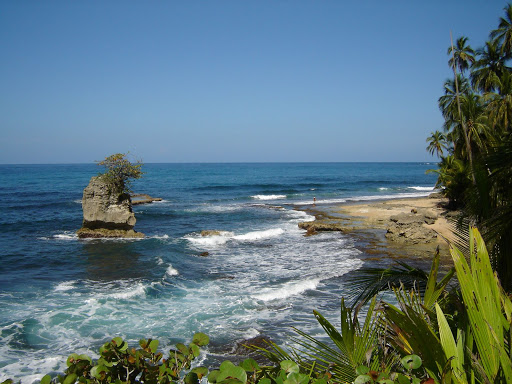Introduction to Costa Rica's Caribbean Coast - New York Times
Introduction to Costa Rica's Caribbean Coast

Introduction to Costa Rica's Caribbean Coast
Costa Rica's Caribbean coast feels a world apart from the rest of the
country. The pace is slower, the food is spicier, the tropical heat is
more palpable, and the rhythmic lilt of patois and reggae music fills
the air.
Although Christopher Columbus landed here in 1502 and christened Costa Rica ("Rich Coast"), this region has until recently remained terra incognita. The Guápiles Highway between San José and Limón was not completed until 1987. Before that, the only routes down to this region were the famous jungle train (which is no longer in operation) and the narrow, winding road from Turrialba to Siquirres. More than half of this coastline is still inaccessible except by boat or small plane. This inaccessibility has helped preserve large tracts of virgin lowland rainforest, which are now set aside as Tortuguero National Park and Barra del Colorado National Wildlife Refuge. These two parks, on the northern reaches of this coast, are among Costa Rica's most popular destinations for adventurers and ecotravelers. Of particular interest are the sea turtles that nest along this stretch of coast. Cahuita National Park is another popular national park in this area, located just off its namesake beach village. It was set up to preserve 200 hectares (494 acres) of coral reef, but its palm tree-lined beaches and gentle trails are stunning.
So remote was the Caribbean coast from Costa Rica's population centers in the Central Valley that it developed a culture all its own. The original inhabitants of the area included people of the Bribri, Cabécar, and Kéköldi tribes, and these groups maintain their cultures on indigenous reserves in the Talamanca Mountains. In fact, until the 1870s, there were few non-Indians in this area. However, when Minor Keith built the railroad to San José and began planting bananas, he brought in black laborers from Jamaica and other Caribbean islands to lay the track and work the plantations. These workers and their descendants established fishing and farming communities up and down the coast. Today dreadlocked Rastafarians, reggae music, Creole cooking, and the English-based patois of this Afro-Caribbean culture give this region a quasi-Jamaican flavor. Many visitors find this striking contrast with the Spanish-derived Costa Rican culture fascinating.
Over the past few years, the Caribbean coast has garnered a reputation as being a dangerous, drug-infested zone, rife with crime and danger. Part of this reputation is deserved because there have been several high-profile crimes; marijuana, cocaine, and crack are readily available in Limón and at the beach towns here. However, part of this reputation is exaggerated. The same crime and drug problems exist in San José and most of the more popular beach destinations on the Pacific coast. Use common sense and take normal precautions and you should have no problems on the Caribbean coast.
No comments:
Post a Comment